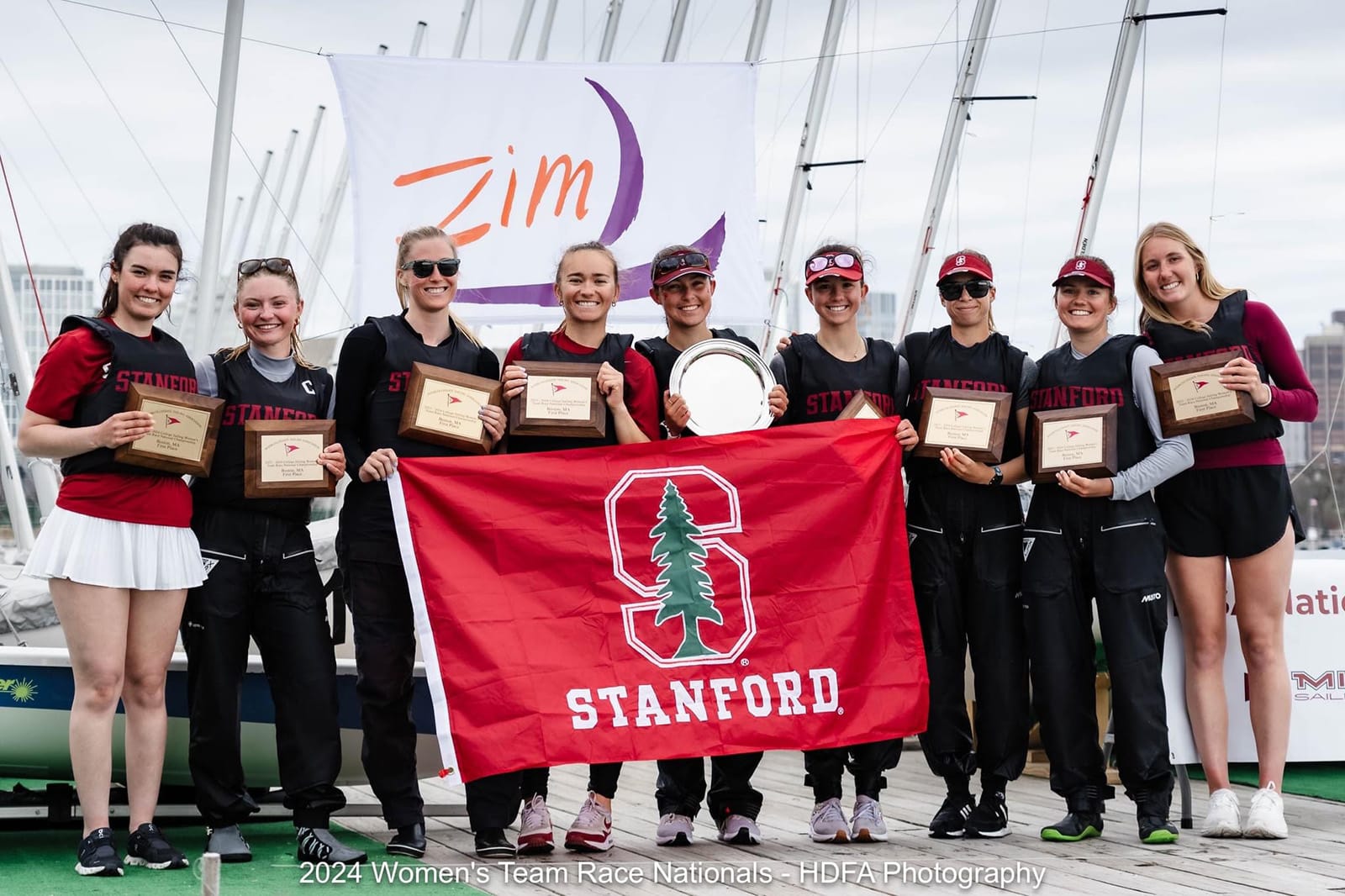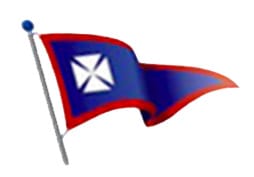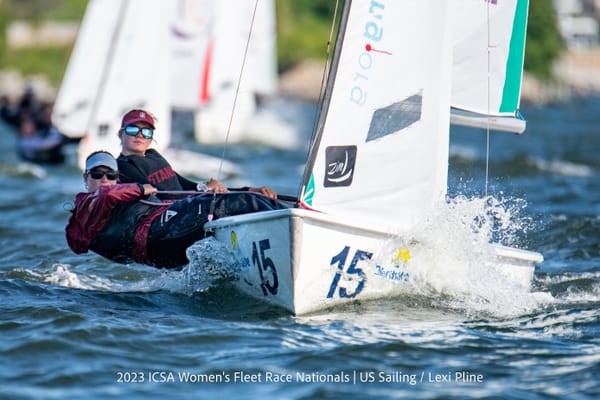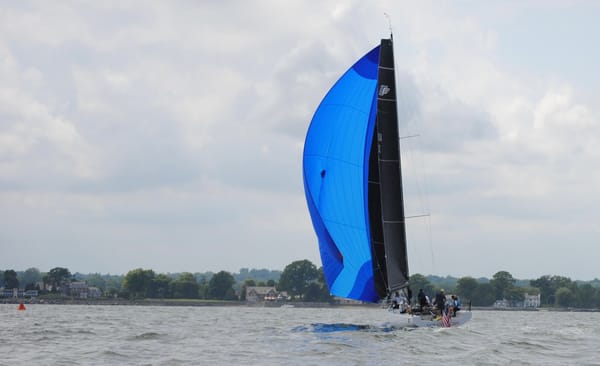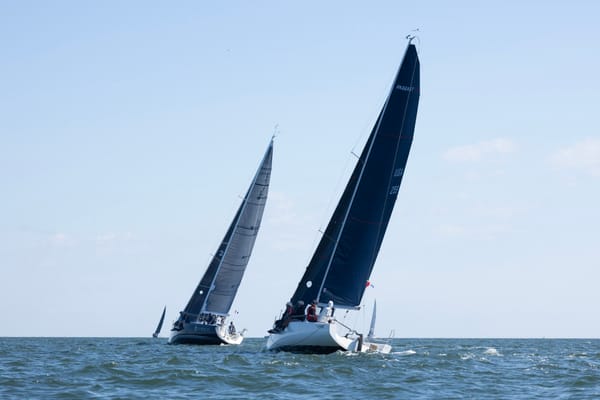Interview with Michelle Lahrkamp
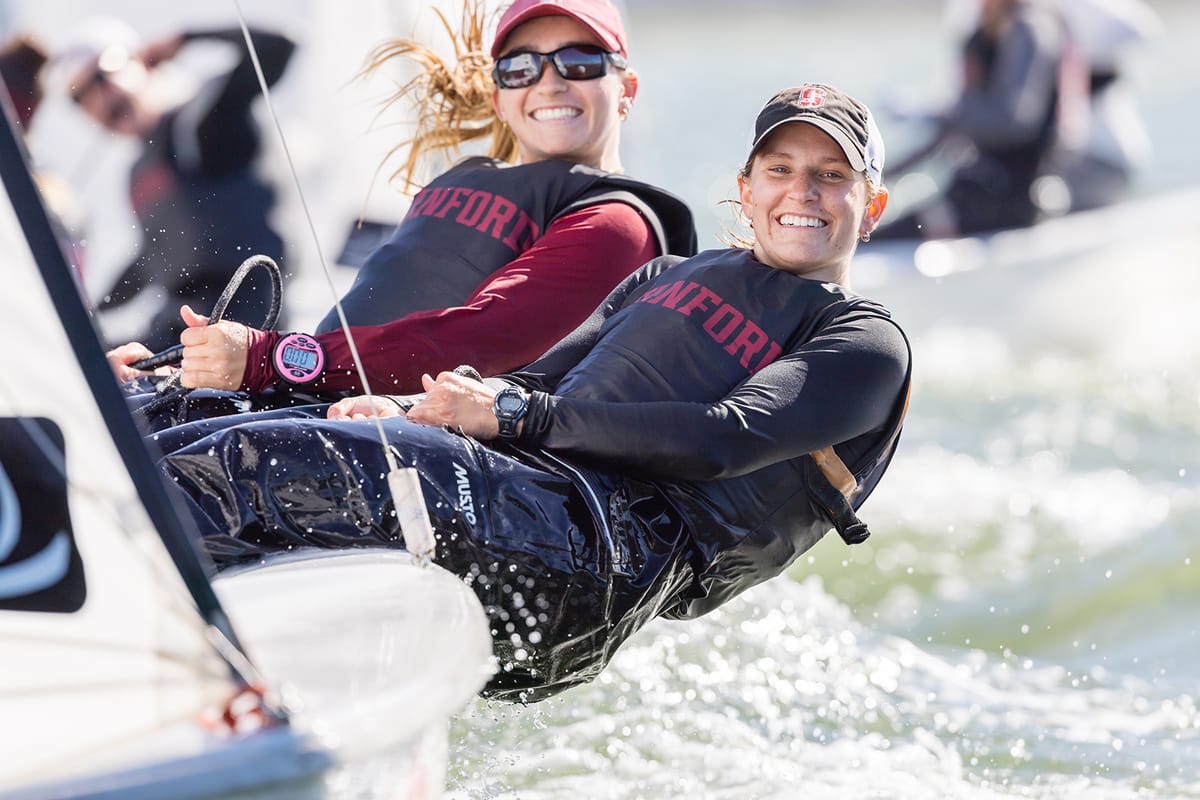
In the wake of her being named Seahorse Magazine's August sailor of the month, we took the opportunity to catch up with AYC member Michelle Lahrkamp. Michelle is wrapping up an incredible stretch of sailing at Stamford University. Among her many accomplishments, she helped (with sister Vanessa!) Stamford win the 2024 ISCA Women's Team Racing National Championship and made history being the first all-female team to win the 2023 ISCA Open Fleet Race Championship in addition to the 2023 ISCA Women’s Fleet Race Championship. In 2023, she also won the ISCA Jim Rousmaniere Student Leadership Award, which recognizes extraordinary leadership and achievement by an undergraduate.
Bell42: How did it feel to be named Seahorse Sailor of the month for August?
ML: To be honest, I didn’t actually know what Seahorse magazine was until Mr. Alexander emailed me to say that he’d sent my nomination announcement to the whole membership. I was like, thanks Rob, thanks for managing my PR. Since then, I’ve read it and it’s a cool publication. It’s actually based in the UK and more internationally known, which is cool. I still don’t know who nominated me, but would love to find out.
Bell42: That sounds like something we need to find out. Hopefully whoever nominated you will come forward after reading this.
ML: It was also a little delayed, because Nationals ended in June, so I wasn’t really thinking about it or expecting something like this to follow.
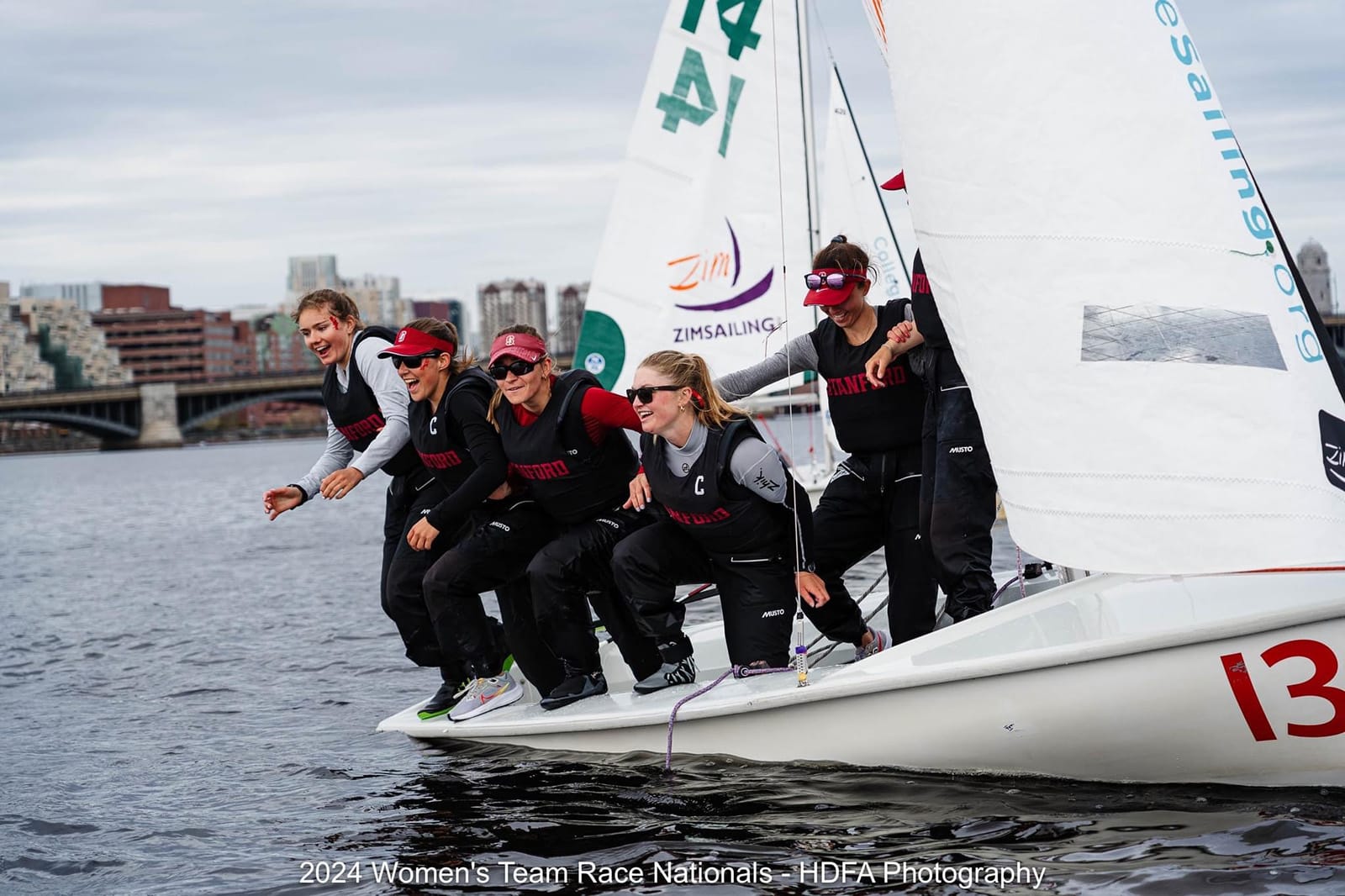
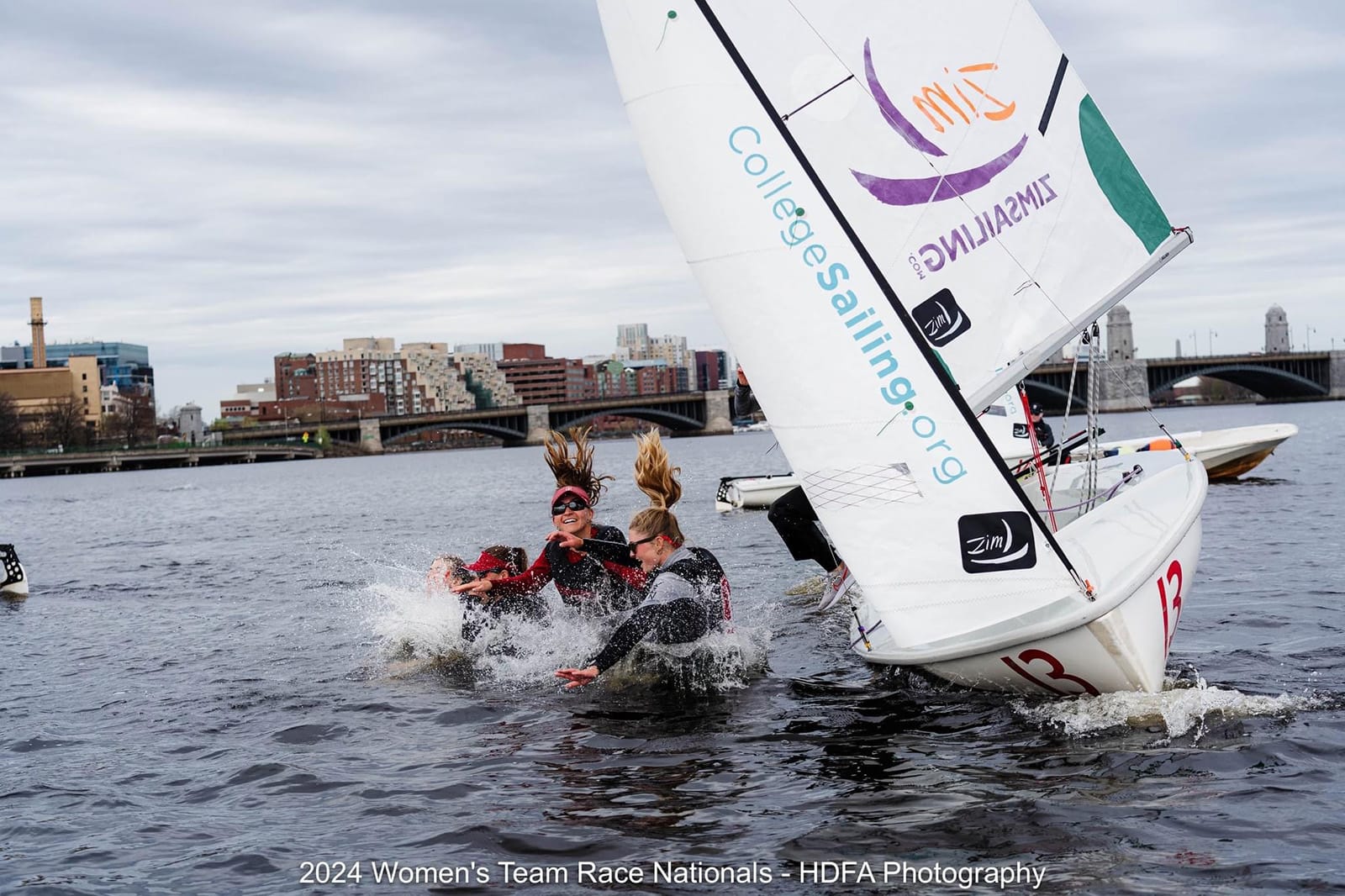
Bell42: Speaking of Nationals and the fantastic year you’ve had, what was your most memorable accomplishment from this past year of sailing, your Masters year at Stanford?
ML: I had a different role on the team this past year, because I had already sailed for three and a half years, so I had a bonus year. So a lot of it was because our team was so small, we really needed all the people to stay as long as possible. Our roster size was around 15, and we usually compete against teams with roster sizes of 30 or 40, so we were very low on numbers. I had a lot of people who I looked up to on the team, who also stayed for the masters program and gave back to the team. For me, it was a no brainer. Plus, my sister, Vanessa, was still there and it was a dream of mine to win a team race with her. We hadn’t won’t a team race, we had only won fleet races. Our third teammate, Hannah Freeman, and I have been sailing together since she was a Freshman, and it was super special that after 4 years with Hannah and now with Vanessa too, that we just destroyed Women’s Nationals Team Race.
It was also a really fun event because everything came together very well. It seemed so natural, because all three of us are at a very high caliber of team racing in general. Vanessa, Hannah and I all sail a lot of open races, because we’re so low on numbers, so our level has gotten a lot higher. A lot of women sailors won’t sail in the open races. The level the last few years has gone up tremendously in women’s team racing and we’re getting almost equally competitive to the open fleet. It hadn’t always been like that and in fact, women’s team racing only started my Junior year. The women’s team race nationals were added my Junior year. Brown was the first to host it, we hosted at Stanford the second year and this was the third year. It’s a great addition to women’s sailing and winning it was really cool.
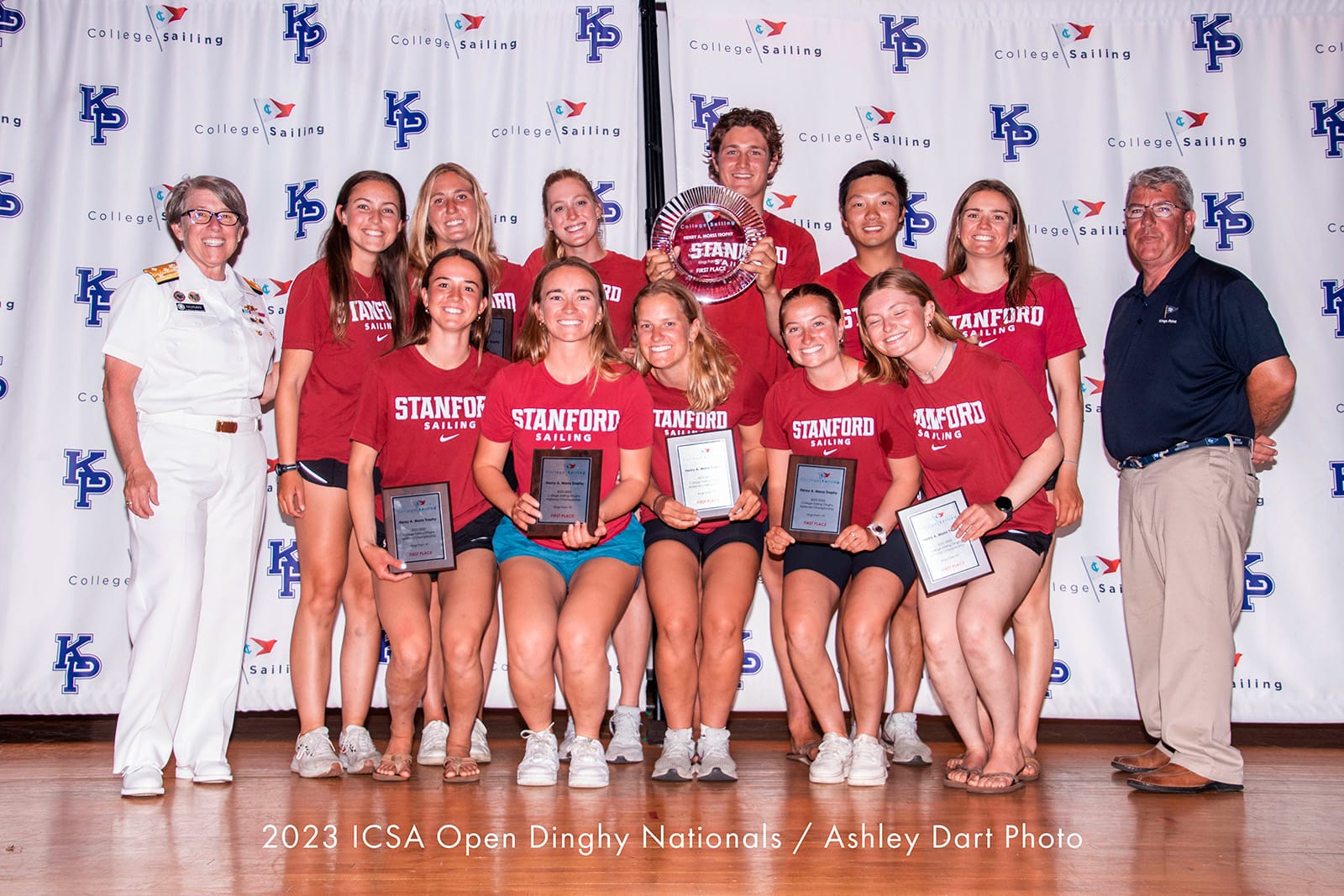
Bell42: Aside from the open racing, was there anything in particular you did in training that helped get you the win?
ML: We have really great assistant coaches and we race against them at practice. So we literally sail against people that are wining the Wilson Trophy or the Hinman. That’s our practice. It’s a maximum of seven or eight boats that we compete against at practice, but it’s some of the most competitive sailors in the world at team racing. So we’re very lucky in that sense, and that’s something other teams might not get the chance to do.
We also use drone footage to analyze our racing, which I like because we’ll use it in the offseason. I actually ran some team race chats before we even got started. It’s just fun to stick with it and talk about it, because it is very mental. If you can get all the plays down and all the theory down, then you can just work on it in the season by executing. So it is very tactical in that sense. At the end of the day though, when you get to nationals, pretty much the top seven or eight teams are all very similar. In these high pressure moments, whoever executes the best and fastest is the winner. And that’s super fun, because the margin of error is so small. In the last round of four, anyone could win. It’s just a matter of who has the fewest errors. And the women’s fleet has also gotten pretty high in calibre, so that little mistakes will cost you.
The Charles, where Women’s Nationals took place, is also an interesting venue, because it’s very unpredictable, especially this year, so that makes it even more fun for team racing, because there’s way more balancing that goes into it, and you have to be on your toes. You have to be really in sync with your teammates at all times, because anything can happen. So that was a really cool thing to see, that Vanessa, Hannah and I had been sailing together for two years straight and it just clicked, where we didn’t even have to say anything. And we all got really scrappy. Since the Charles is so scrappy, you have to be scrappy back. It’s probably not the most traditional team racing and it’s probably chaotic, if you look at it, but it’s fun. There are things you just can’t control and you have to react to them, which made it even more rewarding to win.
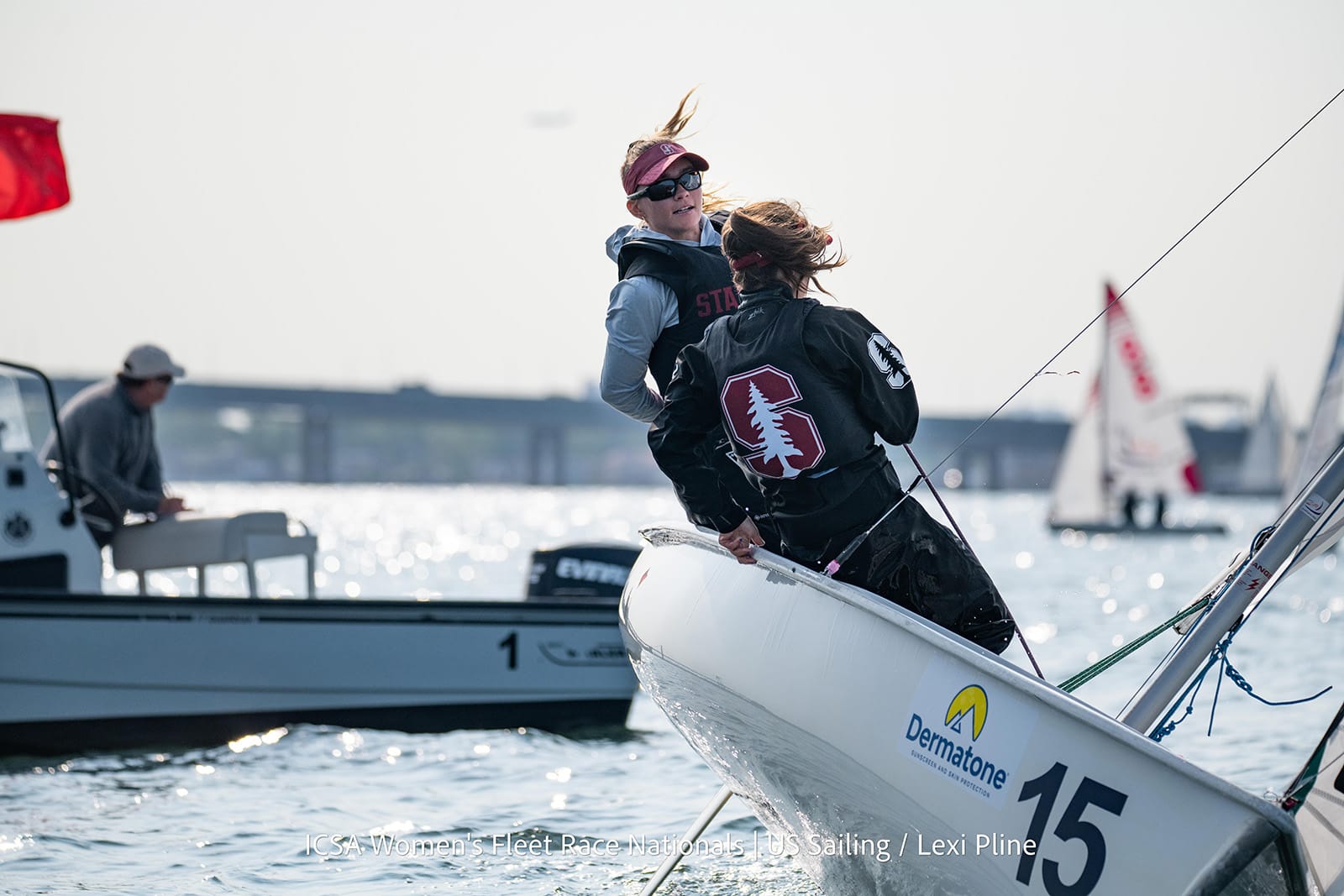
Bell42: What would you say was your most memorable race during your time at Stanford as a whole?
ML: I think the most important one, for Stanford, was winning the Open Fleet Race, because we were the first women’s team to do it. That was very unexpected. People weren’t even talking about Stanford in the top seven. We were such underdogs going into that. But we had sailed Women’s Nationals right before it, and the conditions were pretty much identical. Luckily we new exactly what was going on and we knew all the tide charts, all the topographies, we could just totally sink in and we knew where the lefties would come in or where that current line was, because we had been sailing for 10 days straight already. It was like second nature already in that venue. It was not only a historic win, but it really brought to light how sailing is such an equalizer.
College sailing in general is pretty light air. You might have one or two windy regattas per season. Most of them are medium to light, which makes it super interesting, because the females can be very agile and light and use their boat speed. I think we proved that speed in that venue was the advantage and since we were very in sync with our crews and we had practiced for so long, it paid off. It was a pretty cool moment to be talking about sailing as a sport where, in open sailing, a women’s team could enter and still win. Because that hadn’t happened before. And I think just breaking down that barrier maybe opened up some of the conversations about oh, it’s light air, let’s bring in our female drivers, or our female drivers will be really good in these conditions. It’s cool to open up that conversation and see that women’s sailing can be the same as open sailing. I think it should be, from the get go, but it hasn’t been like that.
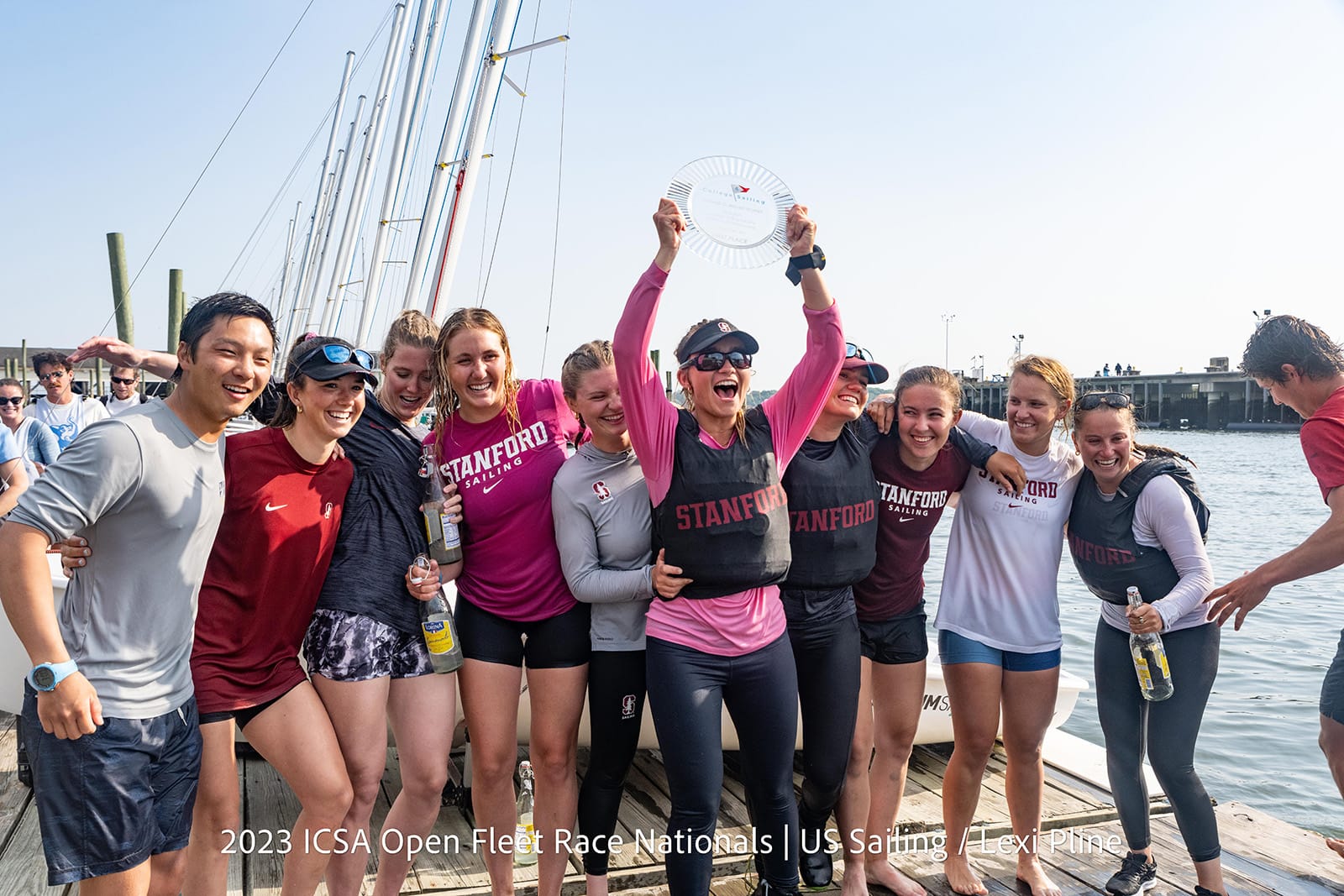
Bell42: What do you see for your sailing in the upcoming year?
ML: Well, I’m transitioning into the real world. So the hard part is that sailing has been such a big part of my time for so long, for more than five years, because I did a bunch of sailing in High School. So it’s been part of my life since I was 12, or even younger, and then in college it just ramps up. But now my job is my priority, so how do I stay in the loop? I’m definitely juggling that. That’s one of the reasons I chose NY. It’s a sailing hub and I would only consider cities where I could keep sailing, where adult sailing is very accessible.
I definitely want to get started with the keelboat team racing, because it just seems really fun. I think also match racing. The women’s match racing circuit is huge. I have had opportunities to do match racing, but I purposely avoided it, because I wanted to keep my energy for it, for post-grad. I met Dawn Riley recently, at the Newport to Bermuda race. She’s been a real role model, someone I’ve looked up to for awhile. She’s done a lot of match racing.
For a long time, AYC didn’t have a boat to use for adult preparation. It was all Seawanhaka or Oakcliff. But AYC, being in Rye, is so much better located to bring back the adult racers from the city. Right now, we have two Sonars, so you can practice match racing, which is great, because a lot of women’s match racing in particular, is in Sonars. Either J22 or Sonars. And then 2 v 2 team racing is also usually in Sonars or Ideals. And we have Ideals at AYC. That’s a great boat to do 2 v 2 practice. I am a big dinghy sailor still, so I will try the Snipe. The Snipe is very similar to the 420, but they have the whisker pole, which is a little different. I definitely want to stick with more of the physical aspect of dinghy racing. Dinghy racing is more fast-paced, it’s very physical. I like the workout.

Bell42: What advice do you have for young sailors, hoping to have even half the success you’ve enjoyed?
ML: As the oldest of three sisters, it’s in my bones to always want to encourage younger girls. I’ve had a lot of people I’ve looked up to who were female sailors or female athletes. One thing in female sports, and even sailing in particular, is the belief that girls can’t beat boys, or that the girls aren’t strong enough, or sailing requires more grit than they have. I think the biggest thing I’ve learned is that having friends on the water and being mature and respected is as important as how good you are. Just saying to a competitor, great race, or hey, you crushed that start, something like that goes a long way. Whether it’s a girl driver or a guy driver, whether you’ve won or lost the race, the sportsmanship says a lot about you and helps you to stand out, no matter if you’re at the bottom of the pack or the top of the pack. The sailing community is small. The kids I sailed against in Opti, I sailed against them in college and I’ll probably sail against them in adult races. And that’s what’s special about the sport, and if you can make good relationships and have a good reputation for sportsmanship, it makes it a lot more fun. Winning is awesome, but if you don’t have the sportsmanship and the friendships and people’s respect, then winning isn’t enough. You need the community that supports you.
I really saw this when I was match racing someone in the last race at Nationals and I needed two crosses on port, I just needed a cross to the right and two guys I’ve always been nice to and always cheered them on, they let me go. They didn’t have to do that, but they knew I was battling it out and I guess they thought it would come back to help them in the future.
Bell42: Work hard, be a good sport and give back to the communities that helped you get where you are - words to live by in sailing and in life! Thank you so much Michelle, and congratulations on a phenomenal final year of college sailing.
